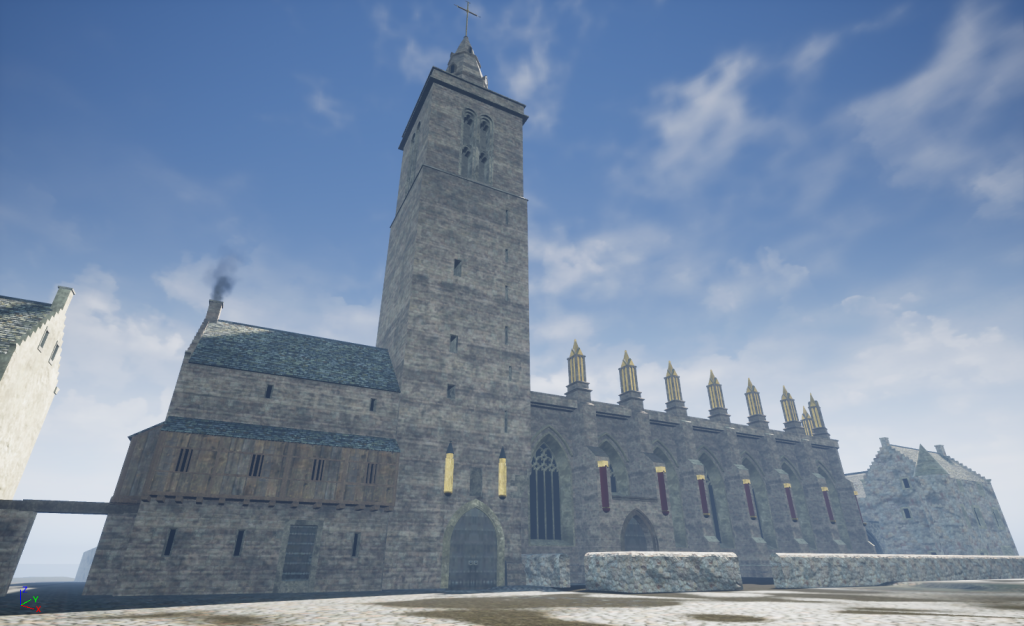Here are some examples of …………………………………………………………………………. text on inportance of visualisations…………………………………………………………………………………………………
Based in the historic city of St Andrews within the School of Computer Science at the University of St Andrews we are lucky to have a a wealth of history and heritage in this area.
We have worked with historians, archaeologists, museums, currators and comunitee groups creating various reconstructions of iconic arcitecture throughout the town.
St Salvators
St Salvator’s Quad is one of the best-known landmarks in St Andrews. For more than five centuries the tall tower of St Salvator’s has dominated the local skyline. Yet much of the rest of the design of St Salvator’s Quad has been completely transformed in the years since Bishop James Kennedy established a College dedicated to Christ the Saviour in 1450.
Now researchers from the University of St Andrews and Smart History take a first look at creating a new 3D digital reconstruction of St Salvator’s College as it may have appeared in its medieval heyday.
This reconstruction of St Salvator’s is the first phase in a wider project to digitally reconstruct the appearance of the whole burgh of St Andrews just before the upheavals of the Protestant Reformation permanently changed the townscape of Scotland’s religious capital.
Digital Reconstruction and video – Sarah Kennedy – Head of Virtual Visualisations
Historical Research – Dr Bess Rhodes – – Head of Historical Research and Prof Richard Fawcett, School of Art History, University of St Andrews
This phase of the project has been funded by St Andrews University Research Impact and the Russell Trust
The Chapel was founded by Bishop James Kennedy in 1450, and consecrated in October 1460. After this time the Chapel has evolved and been altered into the building as it stands today. Various changes to the original building include the tower being damaged in the siege of the castle in 1547, the spire being rebuilt, vaulting has been removed and replaced with a timber roof, choir stalls moved, window tracery changed and pinnacles added to buttresses.

St Andrews Cathedral
St Andrews Cathedral was once the largest and most important church in Scotland. In the late fifteenth century the chronicler Walter Bower described St Andrews Cathedral as ‘the lady and mistress of the whole kingdom’.
There has been a religious site in St Andrews since the early Middle Ages. In the 1160s work began on a vast new cathedral, replacing the church now known as St Rule’s. The rebuilt cathedral was eventually consecrated in July 1318 in the presence of King Robert the Bruce.
St Andrews Cathedral served as a major religious centre until 1559, when it was ‘reformed’ by Protestant activists who made a bonfire of its religious images. In the years after the Reformation the cathedral gradually fell into ruins. When Dr Samuel Johnson visited in the 1770s he commented on the ‘poor remains’ of a formerly ‘spacious and majestic building’.
This reconstruction shows the cathedral in about 1318. It was created by researchers at the University of St Andrews. The cathedral site is now managed by Historic Scotland, and a version of the reconstruction can be seen in their visitor centre.